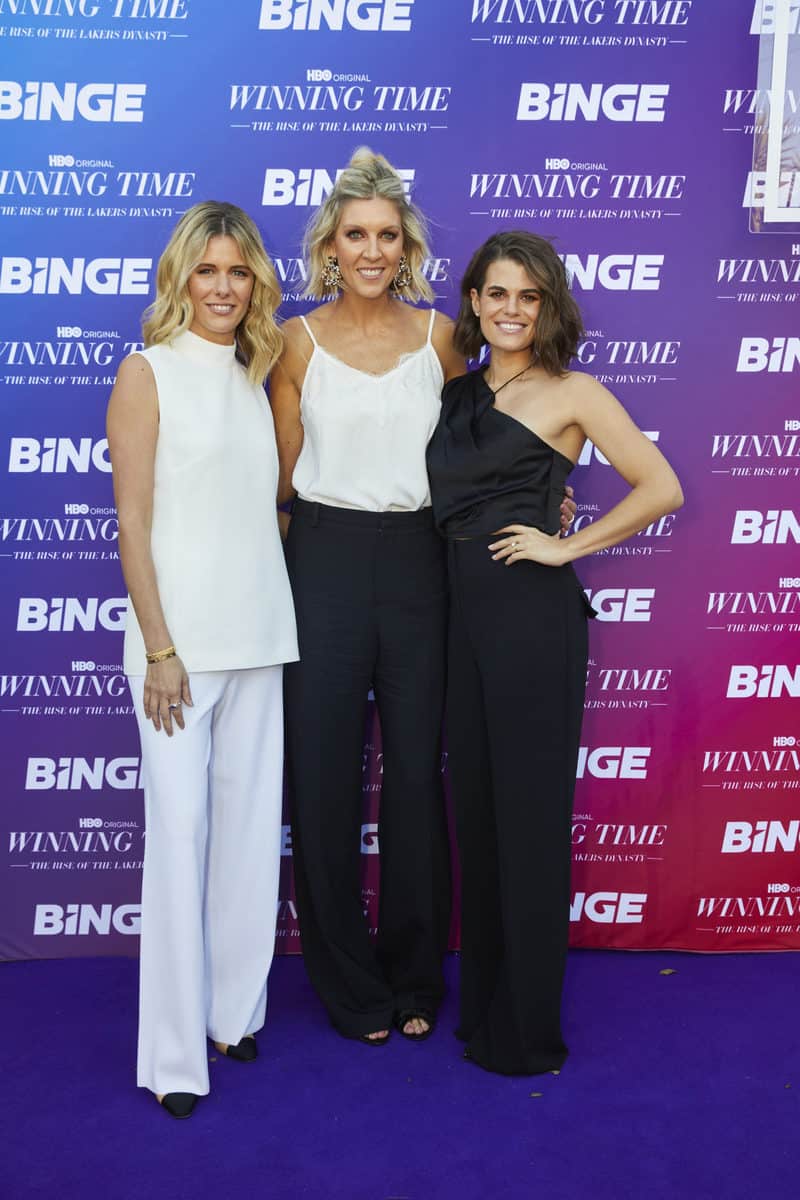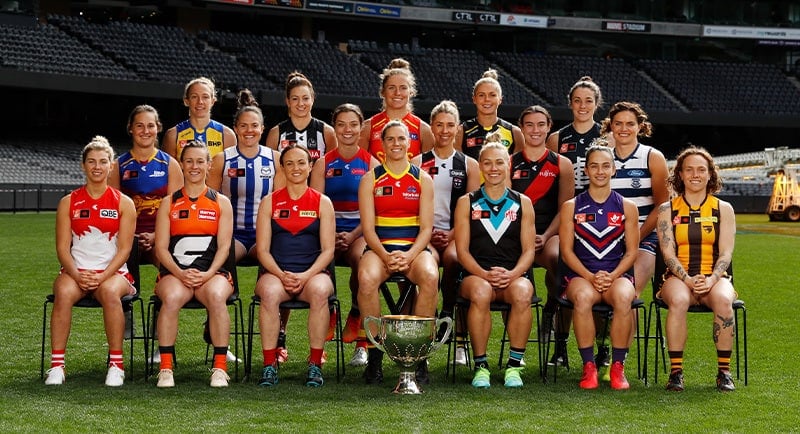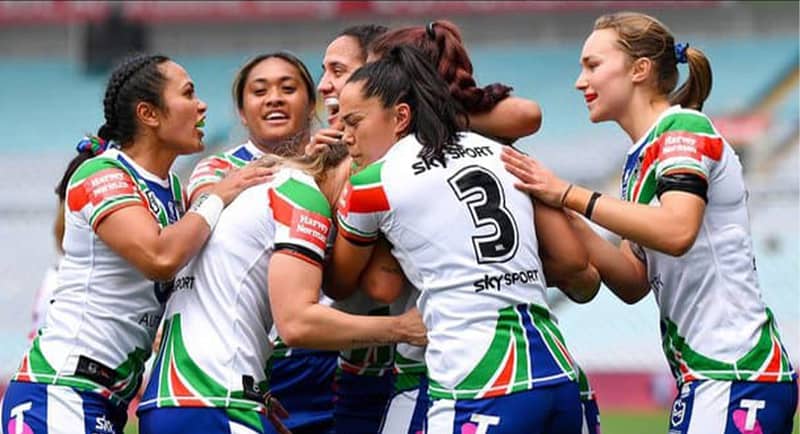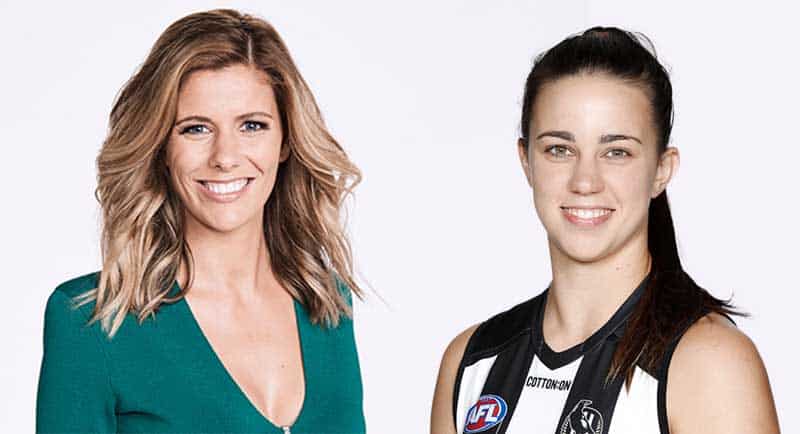The AFLW and NRLW seasons are in full swing, the Matildas are scoring goals left right and centre, and Emma McKeon became the most decorated Commonwealth Games athlete ever earlier this year. The momentum that women’s sport has at the moment is unprecedented, but despite this, it still has a way to go to be on equal footing with men’s games.
Mediaweek spoke to Fox League presenter and journalist, Lara Pitt, and Collingwood AFLW player, Chloe Molloy, at the Ministry of Sport‘s Women In Sport Summit on the Gold Coast.
See Also: Girls to the Front: Ministry of Sport kicks off 2022 Women In Sport Summit
Once upon a time, sports broadcasting was a realm made up almost entirely of men. As more and more women get involved in all aspects of the business, however, Pitt says she wouldn’t necessarily call sports broadcasting male-dominated in 2022.
Pitt: “I’ve been in this role at Fox for 16 years, and it was initially a very entry-level position. But there was a wave of women coming through at the time in 2006, and a lot of them are still on our coverage.
“I would agree to a point that it was very male-dominated, but women are broadcasting across all codes – NRL, NRLW, AFL, AFLW, motorsport. Netball is all female faces. It’s very natural for people to constantly say that sport and broadcasting is male-dominated, but I actually don’t think it’s the case anymore.”

Fox Sports presenters Lara Pitt, Catherine Cox and Hannah Hollis
Looking into the crystal ball can be difficult at the best of times, although it wouldn’t take a psychic to foresee the continued rise in popularity of women’s sports. For both Molloy and Pitt, the future is bright.
Molloy: “The band-aid has been ripped off pretty quickly. The AFLW league is into season seven – we’ve got 18 teams now, and I think that’s huge.
“In the future, speaking from a player perspective, I hope that we are playing full rounds: 23 with home and away, playing everyone once. I hope that we’re playing in stadiums – filling out stadiums! – and that we’re being broadcast in primetime with double headers.”
Pitt: “The women’s game should look like everything that the women deserve, which is a sustainable, successful quality product.
“I’m sure over that time naturally, we will see the women supported – they’ll have the right facilities and they’ll be playing in the great stadiums. I want to see an Origin series with three games, not one, not two! Actually, I think that’s going to happen next year – I just have a feeling.
“I don’t think the sky’s the limit, I think it’s beyond that.”
A lot of work has gone into getting women’s sport to where it is today, but there is still a long way to go until it matches the men’s games. Molloy says that providing the facilities needed at the community level is the place to start.
Molloy: “The facilities just aren’t there. The grassroots levels need to be funded and supported, and the pathways that lead to the pinnacle start at the bottom. Funding and resources from local and state governments build the routes by making sure there are change rooms that are appropriate, making sure grounds are appropriate, and making sure that if my daughter wants to play there is a football team she can play for. It starts there, because that is ultimately what’s going to grow the game.”

AFLW 2022
For Pitt, getting games on screens and in front of eyeballs is the key to elevating women’s sports to the next level.
Pitt: “Kayo and Fox Sports are broadcasting more women’s sport than ever before, and when you put women’s sport on TV, girls see that they can become those stars. My heroes were our Olympic swim team and our netball team growing up, there was certainly no one playing footy.
“Having us broadcast it will make a huge difference. Bringing sponsors on board, funnelling that money from broadcast into the actual competitions, and then ultimately giving the girls all the facilities they deserve and the pay they deserve.”
Speaking of the athlete pay gap, moves are being made to close it but it’s still a significant hurdle to face. Despite this, in Pitt’s experience, it’s not necessarily an issue that’s front of mind for the women on the field.
Pitt: “The sense I get from the NRLW players is that, yes, that’s going to be going on in the background, but they actually want to focus on being the best athletes they can be.
“It’s going to take time, and there is a process to play out to fix the gender pay gap. It’s not too dissimilar to real time society in the top end of town. Those things are going to play out over the course of the next decade, and hopefully we get there.”

NRLW Warriors
For Molloy, the women who work other jobs to substitute their athlete pay have some of the most interesting stories to tell.
Molloy: “It’s so interesting to hear female athletes in this industry talk, because you ask us what we do and we say ‘I’m a presenter, and I’m a player, but I also do X, Y, and Z outside of it’.
“We’ve got nurses and doctors that finish training, get in their scrubs and go to work. It’s quite incredible to see. So yes, that pay gap is there and that will be addressed in due course, but whilst we’re in this grey area, you’re going to hear some incredible stories of what female athletes are doing.”
